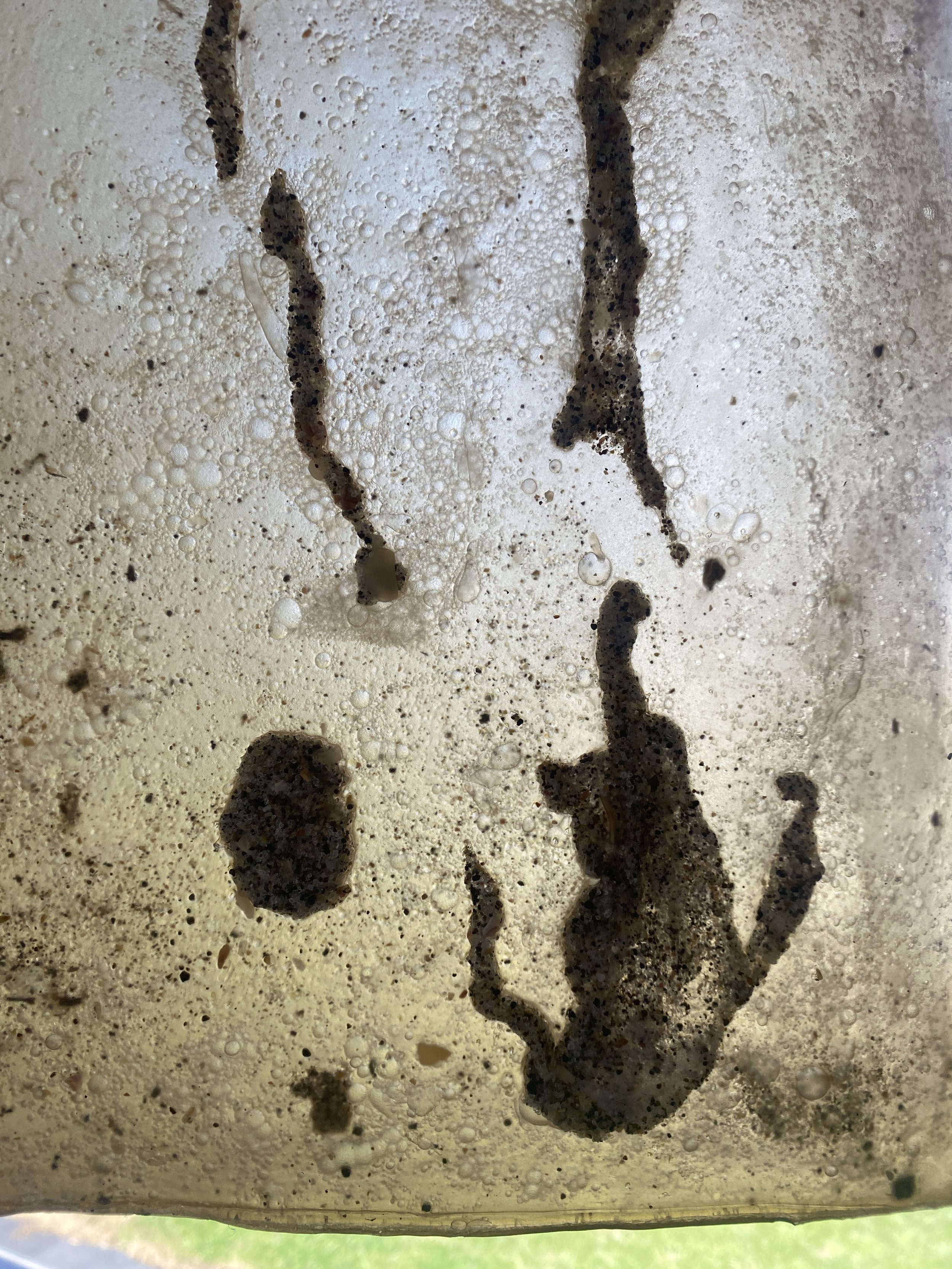Work I
I created a work thinking about estuaries and where tide meets river. The sandy bits were made in the shoreline with salt water at the beach (material investigations VII). I see this as the silty bed of an estuary with a tidal inflow of sea water and sand. Saltwater is heavier than fresh water and when the two mix the saltwater sinks. The work is created from front to back. The pieces of bioplastic made from salt water are suspended in fresh water bioplastic, poured in 4 layers. Within the layers different elements are added. The final layer poured (seen in the second image below) is mixed with natural brown pigment to emulate the silt. There is then this kind of collaboration with the hydrological cycle of earth and the process of evaporation completes the work (image 3 below). But then it is not really complete as, depending on the environment, the bioplastic will absorb some moisture from the air and then expel it through syneresis or evaporation and remaining part of that hydrological cycle and also maybe reminiscent of tides and the change of water content within the body of water of the estuary.
A quality of the work I quite like is that when it is backlit, there is an effect of looking up through water (image 4 below) - bubbles and those floaty bits that you may find estuaries. Algae is also present in estuaries so there is a material link.
This clip shows the change in the material after evaporation of the moisture used in the bioplastic has occurred.
Further Research
For curiosity sake, I researched whether there is a goddess of evaporation and happened upon Te Papa’s webpage The legend of Matariki and the six sisters which describes a popular Maori legend related to Matariki.
Waipunarangi is one of the stars in the Matariki constellation (one of the six sisters) and she has a link to water and the hydrological cycle which perhaps is something to keep in mind for future reference. Her role is described by Te Papa as follows:
Waipunarangi accompanies her grandmother to the waters – the oceans, lakes and rivers – where she prepares the children of Tangaroa to feed the people.
Papatūānuku also teaches her about how the water that spills down from Ranginui collects together to provide drinking water for the people, animals and plants.
She also watches how the water is evaporated by the heat of Tama-nui-te-rāTama-nui-te-rā the sun into the clouds that cloak Ranginui, so that may rain once again.
Waipunarangi knows that if you give to others, all that kindness will come right back to you, and it is this lesson that she shares with us.
Reference
Museum of New Zealand Te Papa Tongarewa, Wellington, NZ. “The Legend of Matariki and the Six Sisters,” May 4, 2022. https://www.tepapa.govt.nz/legend-matariki-and-six-sisters.




